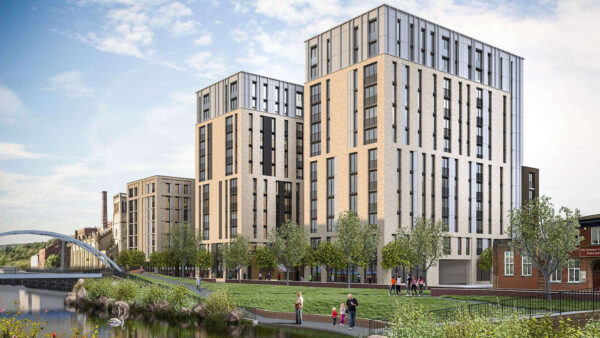
Adding nitrogen to concrete could reduce the level of harmful pollution created by the construction industry, suggests new research.
In a paper published in Nature, researchers at the University of Birmingham said that concrete nitrogenation could contribute to a reduction in nitrogen oxide (NOx) emissions by 3.4-6.9 megatonnes (Mt) – the equivalent of 6-13% of industry-related emissions in 2021.
NOx is a highly reactive toxic air pollutant that can contribute to acid rain, ozone layer depletion and pose significant health threats, particularly respiratory diseases. It is a main contributor to air pollution-related mortality.
The nitrogenation process could reduce NOx by a total of 131-384Mt by 2050, which would be the equivalent of 75-260 years potentially lost to premature death and reduced quality of life when estimated in terms of disability-adjusted life years.
The study’s lead author, Ning Zhang, from the Leibniz Institute of Ecological Urban and Regional Development, said: “Applying this technology holds promise for rapidly urbanising and emerging industrial regions, as it can generate substantial economic value and curtail industrial NOx pollution in these areas.
“The proposed nitrogenated concrete material presents a promising integrated solution for mitigating air pollution and managing construction waste in industrialised regions.”
Doubled NOx emissions
Co-author Dr Yuli Shan, from the University of Birmingham, said: “Cities around the world, particularly those in the global south, are experiencing extensive urban renewal, expansion, and modernisation – all inevitably creating atmospheric pollution.
“Between 1970 and 2018, global NOx emissions nearly doubled from 70Mt to 120Mt. Addressing and managing these emissions is crucial for enhancing urban health, fostering sustainable industrial growth, and ensuring environmental wellbeing.”
Some of the challenges of putting this kind of NOx sequestration process into practice concern the transportation of large volumes of materials and gases. To tackle this, experts recommend using established industrial and commercial concrete carbonation systems to help optimise the logistics network and enhance the feasibility of concrete nitrogenation.
The researchers also recommend setting up an emissions trading system like the one already created for CO2 to create a more precise and widely accepted quantification of the advantages associated with NOx sequestration.











